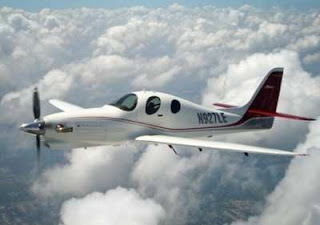By Jim Ruttler, Instrumented Rated Pilot, RV-10 Builder, Patent Attorney
www.ruttlermills.com
jim@ruttlermills.com
When most people hear experimental aircraft, they think of some unsafe contraption designed and built by some crackpot in his garage. Yes, some experimental aircraft do include these contraptions and I wouldn't ever fly in one. But there are other aircraft that are also considered 'experimental' that are designed by professionals and built using state of the art avionics and engines. These are kit aircraft and the variety of experimental aircraft that I'm talking about. Examples include the RV-10 by Vans Aircraft, the Lancair Evolution Turbine, the the Glassair Sportsman.
www.ruttlermills.com
jim@ruttlermills.com
When most people hear experimental aircraft, they think of some unsafe contraption designed and built by some crackpot in his garage. Yes, some experimental aircraft do include these contraptions and I wouldn't ever fly in one. But there are other aircraft that are also considered 'experimental' that are designed by professionals and built using state of the art avionics and engines. These are kit aircraft and the variety of experimental aircraft that I'm talking about. Examples include the RV-10 by Vans Aircraft, the Lancair Evolution Turbine, the the Glassair Sportsman.
As you can see, these aren't your typical homebuilt
aircraft. These 'experimental' aircraft
are state-of-the-art and have performance characteristics that do circles around
the non-experimental certified aircraft that most people think of in the
general aviation fleet. And, they do it
for a fraction of the cost of those non-experimental aircraft. For instance, a new Cessna 172 with a 160 hp
engine that cruises at 125 knots will set you back around $500,000. An RV-10 with a 260 hp engine that cruises at
170 knots equipped with a full class cockpit and ceiling of 24,000 feet will
run you around $150,000 - and the RV-10 is one of the more expensive
models.
As for avionics, here is a picture of my panel in my RV-10 as compared with what you typically find in the general aviation certified fleet for the same cost. Mine includes synthetic vision, traffic, weather, full auto pilot that will fly approaches down to minimums, full redundancy ... you get the idea.
So what is going on here?
Well, the FAA has strangled the certified general aviation market with
over-regulation slowing advancement to a crawl.
Any technology or improvements that do come out through the certified
market are priced to reflect the difficulties getting anything certified. Thus, certified planes cost a ton and are very
difficult to change. Instead
of fighting this uphill battle with the FAA, companies have flocked to the
experimental market and created an entire industry based on one little rule: the
50 percent rule.
The 50 percent rule goes like this: if you assemble more than 50 percent of an airframe, you are exempt from the FAA regulations. Originally, it was just one guy in the 1970's taking advantage of this exception: Dick VanGrunsen of Van's Aircraft. But as the decades went on, Vans was joined by other companies where there are now hundred if not thousands of experimental kit aircraft manufactures. The companies have gotten very adept at providing everything they can possible can while still ensuring that the customer builds 50 percent or more of the aircraft. They have figured out what counts as part of the 50 percent and what doesn't, so they can minimize the effort required by the customer. Essentially, they design the airframe and send you the parts and instructions for you to blindly follow.
One particular manufacturer has taken it to the extreme and offer a build in two weeks at their factory under their supervision. Essentially - you put your hand on the tools while an army of people run around and support you with equipment and knowledge. Obviously, you're not really doing what homebuilders used to do, but you are satisfying the rules.
The offer of a better airframe was reason enough for many people to get into experimental aircraft. But, the technological developments over the past decade have accelerated this movement to the point where it is very likely that certified general aviation aircraft probably won't exist for much longer. The ability to have synthetic and enhanced vision systems, real time 3D traffic, free streaming weather, autopilots - even motorcylces in belly tanks and airframe parachutes - for practically nothing are closing the book on the certified makers.
These advanced airframes and avionics systems are being offered at prices comparable to cars - not houses - and they are going to make general aviation accessible once again to the masses. So, if you are looking into general aviation, forget about certified aircraft and focus on the experimental kit options. In the next post, I will discuss various aircraft kits available, the skills needed to build, and the general process.





No comments:
Post a Comment